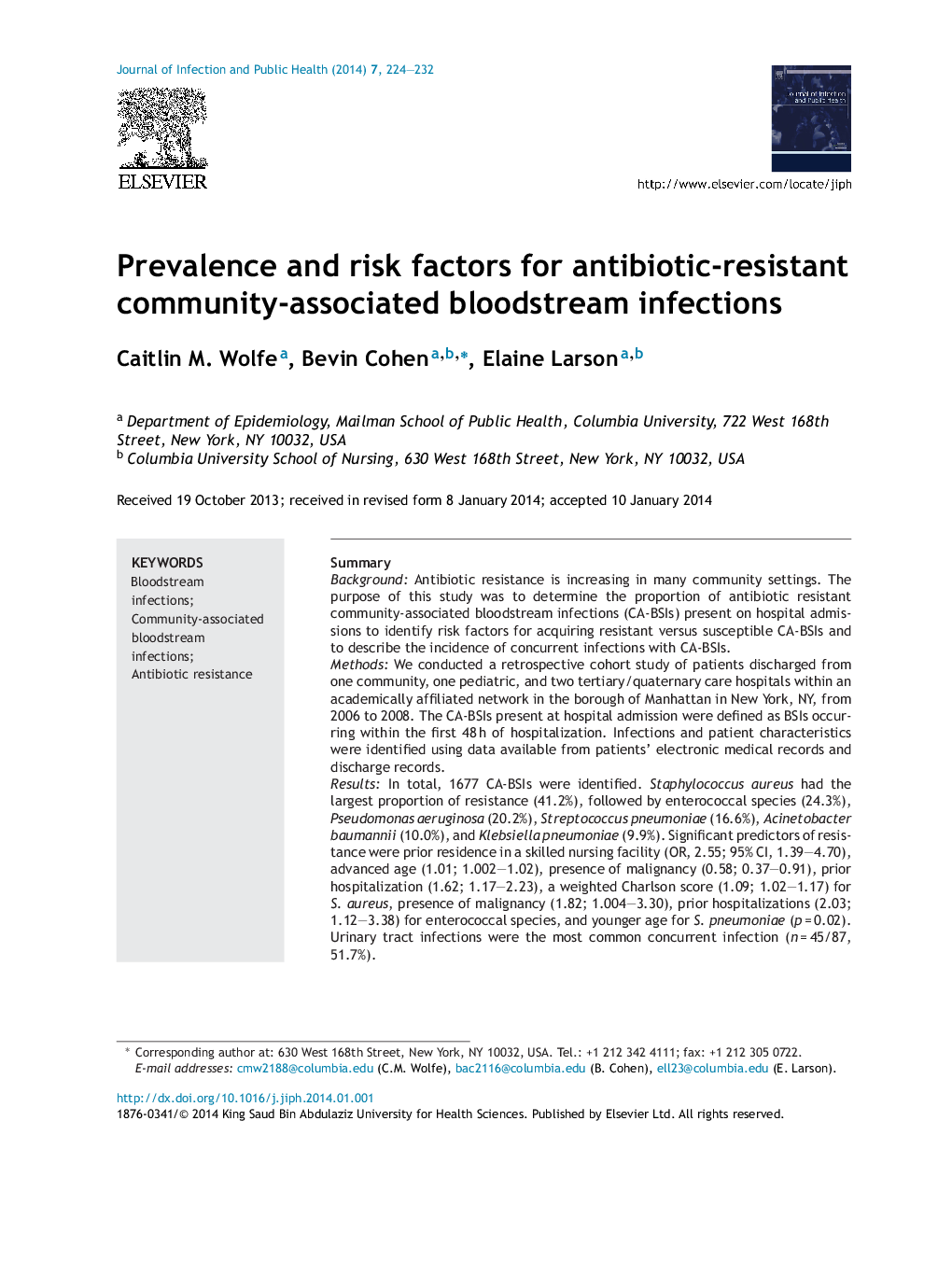| Article ID | Journal | Published Year | Pages | File Type |
|---|---|---|---|---|
| 3405945 | Journal of Infection and Public Health | 2014 | 9 Pages |
SummaryBackgroundAntibiotic resistance is increasing in many community settings. The purpose of this study was to determine the proportion of antibiotic resistant community-associated bloodstream infections (CA-BSIs) present on hospital admissions to identify risk factors for acquiring resistant versus susceptible CA-BSIs and to describe the incidence of concurrent infections with CA-BSIs.MethodsWe conducted a retrospective cohort study of patients discharged from one community, one pediatric, and two tertiary/quaternary care hospitals within an academically affiliated network in the borough of Manhattan in New York, NY, from 2006 to 2008. The CA-BSIs present at hospital admission were defined as BSIs occurring within the first 48 h of hospitalization. Infections and patient characteristics were identified using data available from patients’ electronic medical records and discharge records.ResultsIn total, 1677 CA-BSIs were identified. Staphylococcus aureus had the largest proportion of resistance (41.2%), followed by enterococcal species (24.3%), Pseudomonas aeruginosa (20.2%), Streptococcus pneumoniae (16.6%), Acinetobacter baumannii (10.0%), and Klebsiella pneumoniae (9.9%). Significant predictors of resistance were prior residence in a skilled nursing facility (OR, 2.55; 95% CI, 1.39–4.70), advanced age (1.01; 1.002–1.02), presence of malignancy (0.58; 0.37–0.91), prior hospitalization (1.62; 1.17–2.23), a weighted Charlson score (1.09; 1.02–1.17) for S. aureus, presence of malignancy (1.82; 1.004–3.30), prior hospitalizations (2.03; 1.12–3.38) for enterococcal species, and younger age for S. pneumoniae (p = 0.02). Urinary tract infections were the most common concurrent infection (n = 45/87, 51.7%).ConclusionOver 27% of the CA-BSIs present on admission were antibiotic resistant. Understanding the prevalence and risk factors for CA-BSIs may help improve empiric antibiotic therapy and outcomes for patients with community-onset infections.
